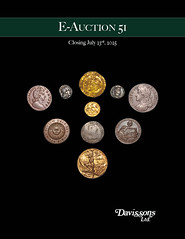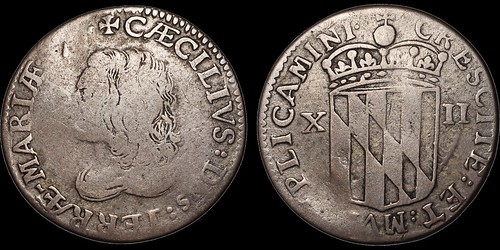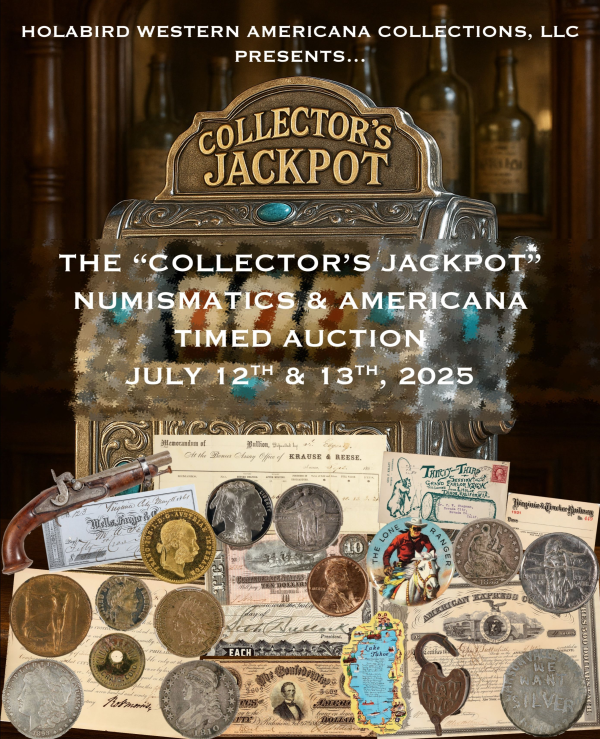
PREV ARTICLE
NEXT ARTICLE
FULL ISSUE
PREV FULL ISSUE
DAVISSONS E-AUCTION 51Davissons E-Auction 51, closing Wednesday, July 23rd 2025, is online now. Here is their press release. -Garrett
It begins with a bit of gold at a time when gold is popular far beyond numismatic interests, interesting and affordable Greek coinage including some appealing silver, bronze and a group of rare Peloponnesos issues (lots 37-43) that merit a look. Ancient Rome is represented by a diverse Provincial, Republican, and Imperial group, a few sestertii, some high grade later silver and, in a modest departure from these currency issues, a group of lead seals and some Paduans. 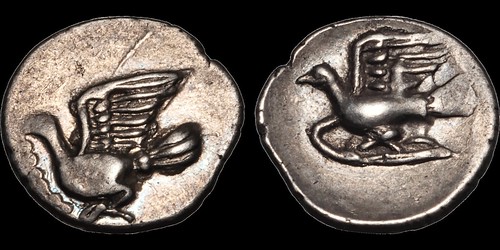
Lot 39. PELOPONNESOS. SIKYONIA. Sikyon. Circa 350-330/20 B.C. AR obol. .89 gm. 12 mm. Dove alighting left, holding fillet in beak / Dove flying left. BCD Peloponnesos 244. HGC 5, 224. Good Very Fine; beautiful lustrous tone with iridescence; struck on good metal. The British section is primarily minor silver issues—Plantagenet pennies, a few interesting groats and a few milled issues. Later in the sale look for a few pieces from Renaissance Europe, lots of high grade material that has survived in nearly Uncirculated condition, along with a run of a few world coins. 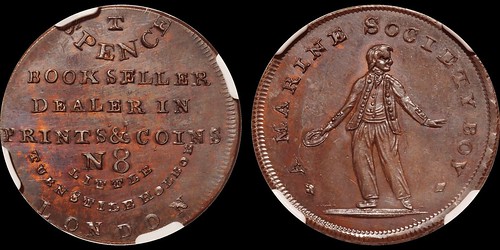
Lot 183. Middlesex 698 (R). Spence. Copper halfpenny. 30 mm. T SPENCE BOOKSELLER DEALER IN PRINTS & COINS NO 8 LITTLE TURNSTILE HOLBORN LONDON in 9 lines Trade tokens of the late 18th century, a time when minting technology was changing from hand work to machine work, come next. Our firm includes this series consistently in our sales. It is a fascinating period historically and numismatically, and this section includes consignments from several collectors including some who had their pieces graded and placed in holders. Coins of the United States end the world coin section and a couple of rare but low grade pieces from Colonial and early US Mint issues can be found there. Note the Baltimore shilling (lot 272) showing much of the detail but also wear. The other is an 1806 Heraldic Reverse quarter (lot 282), even wear and scratches, neatly holed at some time but with clear design and a modest estimate. Both of these pieces came from the same collection formed by a collector representing important pieces from the Colonial and early Federal era with pieces that were affordable but still appealing as representative of the times. Finally, a few interesting medals, three pre-formed collections of US coins in holders, and an historic five dollar silver certificate with a historically wrong portrait. Assembling and cataloging this sale raised some interesting questions. One is a question about the numismatic value of gold coins in a time of historic high prices. The only rational answer is that gold coins were issued in that metal because the market for the metal established the commercial value of the piece no matter what the denomination noted on the coin was. 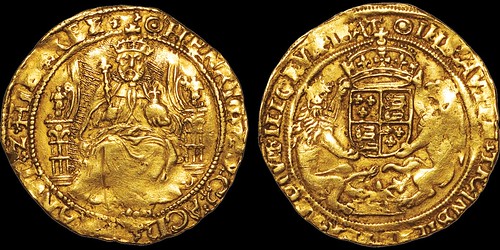
Lot 1. GREAT BRITAIN. Henry VIII. 1509-1547. AV half sovereign. 6.3 gm. 30 mm. Tower mint. Pellet-in-circle i.m. The king seated on a throne, facing, older visage / Crowned arms with lion and dragon supporters. S. 2294. N. 1827.
One piece where gold content is relevant only as a question of authenticity is the gold half sovereign of Henry VIII with an exceptional portrait (lot 1). This was a hard piece to grade. It is well struck and with better detail than typically seen. The old head portrait is unusually clear on the piece. The surfaces have more The other piece that was challenging was the Baltimore shilling (lot 272). The gradations of grading in the MS 60 to 70 range seem to me challenging to discriminate when it is only a point or two, particularly in the higher end of the range. But grading US material in the AG3, G4, VG8 range is challenging as well. The shilling lacks detail but the wear is even, the silver shows wear but not damage, the color is attractive and there is no doubt about the details. The early shilling has damage but it is a decent example of what it is, and well representative if you are interested in the era and the type—it opens at the AG3 price level.
Allan Davisson
Wayne Homren, Editor The Numismatic Bibliomania Society is a non-profit organization promoting numismatic literature. See our web site at coinbooks.org. To submit items for publication in The E-Sylum, write to the Editor at this address: whomren@gmail.com To subscribe go to: Subscribe All Rights Reserved. NBS Home Page Contact the NBS webmaster 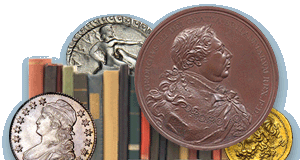
|
